What's happening with Road Tubeless?
The Road Tubeless format introduced by Hutchinson and Shimano in 2006 ranks among our favorite and...
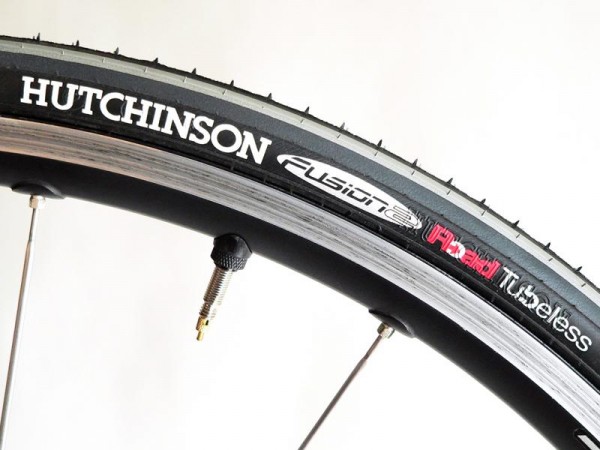
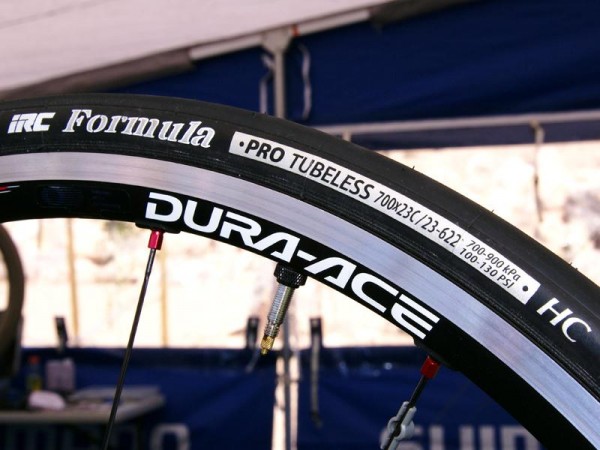
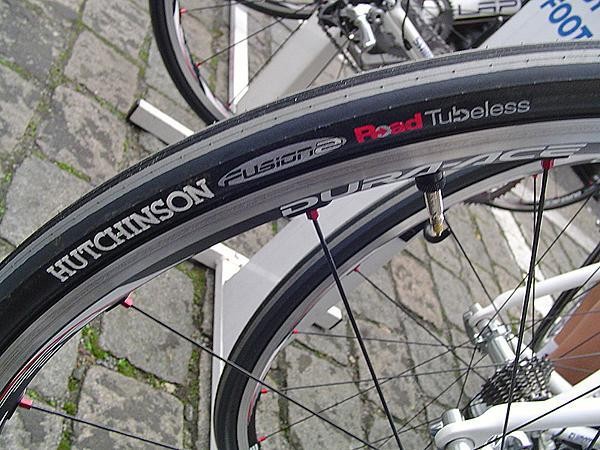
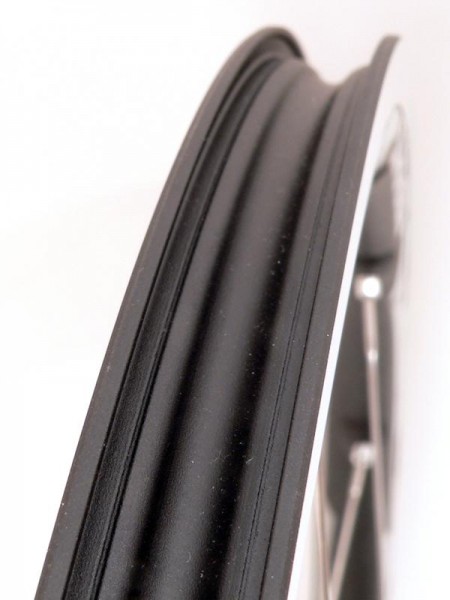
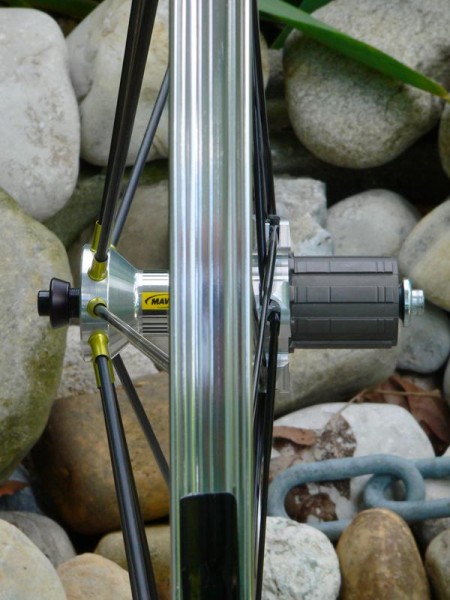





Tech Feature: Road Tubeless development, March 19, 2008
What's happening with Road Tubeless?
The Road Tubeless format introduced by Hutchinson and Shimano in 2006 ranks among our favorite and most significant technological developments in recent memory. Here we have a system that is comparable in weight to existing top-end tube-type setups while offering superior grip and flat resistance as well as a noticeably improved ride quality to boot. Pro riders are beginning to take notice, too: Philippe Gilbert (Française des Jeux) just won Omloop Het Volk on the system earlier this month.
As good as Road Tubeless is, product availability remains an issue. For 2008, we can expect the range of offerings to grow to four wheel models from Shimano and a quartet of tires between Hutchinson and new Road Tubeless supporter IRC (plus some 'cross-specific models). Off-road tubeless tire converting master Stan Koziatek also debuted his own NoTubes conversion kit for use with standard rims and Road Tubeless-certified tires at last year's Interbike show, although it isn't officially sanctioned by any of the system's official supporter (we've currently got the system in test anyway and the results so far have been quite promising).
Even so, Hutchinson initially stated that Mavic, Campagnolo and Corima had all signed on to develop Road Tubeless-compatible wheelsets of their own. So far, though, we've seen... nothing. Given the system's obvious performance benefits over conventional clinchers, what happened to the promised deluge of other adopters?
Michelin weighs in
Michelin began work on its own tubeless road system in 2000, shortly after the successful introduction of UST, the off-road version that it co-developed with Mavic. High-profile road race results came shortly afterwards in 2003 when Samuel Dumoulin (Jean Delatour) finished third overall Le Tour de l'Avenir. The next year, Thomas Voeckler (Bouygues Telecom) also rode Michelin's new system during part of his courageous stint in yellow at the Tour de France and as many as three prototype models were spotted around the 2004 Paris-Roubaix: the Pro Race Tubeless, the Pro Grip Tubeless and the Pro Grip Special Pave Tubeless.
Get The Leadout Newsletter
The latest race content, interviews, features, reviews and expert buying guides, direct to your inbox!
As with UST, Rivallant says that sponsored road riders who have used Michelin's tubeless system like its increased resistance to flats, the slower rates of air loss in the event of a puncture, as well as the enhanced security that comes with a firmly locked-on bead when they have no choice but to continue on a deflated tire. However, he says they have only reported a very modest difference in performance over standard clinchers and that some of the system's benefits are lost on them anyway since the riders generally run very high tire pressures for maximum perceived efficiency.
As he puts it, "Everyone claims that the racers are using it but for the racer, honestly speaking, the harder it is, the better they feel. What they want is pure efficiency and usually they look for materials in equipment that are rigid like crazy. So comfort, to me, is nonsense when you talk about road tubeless."
Even so, Michelin proved that its tubeless road clinchers worked and it seems obvious that the same benefits off-road riders enjoyed with UST should transfer well to non-pros who would likely run the system at the slightly lower (and more realistic) pressures it's capable of. However, Michelin currently has no plans to release a commercial system for consumer use. Why?
According to Rivallant, the road version's smaller and tighter dimensions relative to UST would make inner tube installation too difficult for average consumers to deal with in the event of a flat. In addition, tubeless road clinchers would also require fairly stringent dimensional tolerances for the accompanying rim. "When we are working with Thomas Voeckler and the teams, we know exactly the rims that they are using," he said. "So it's very easy; it's one parameter that we control. When you go to the [general] market, if the standard is not well applied all across the rim makers, then you put the people at risk."
Tire compatibility was also cited as a reason against releasing the system to the public. "We are not rich enough, nobody is rich enough, to buy a tire for a specific rim. You buy a rim and buy any kind of tires, and vice versa."
More to the point, Rivallant claims that the performance benefits of tubeless road clinchers relative to standard clinchers are too modest to justify its additional cost to consumers. As a result, he says Michelin will only continue to develop its tubeless road technology for its racers where it's warranted but it sounds like that will be about as far as it goes.
Mavic's point of view
Mavic product manager Maxime Brunand shares Rivallant's concerns over day-to-day livability of tubeless road clinchers for consumers but was more optimistic about its potential benefits. "We came to a point where we had no way to improve the user friendliness of the system so we did not feel very confident with putting the system on the mass market. Apart from that, the comfort is very good, the safety is very good [and] the performance is very good and not that far away from a tubular... so we still make some tests and some improvement of the wheel but until we are 100 percent satisfied with it we won't [offer it]."
Brunand also says that adding tubeless compatibility to its road rims would add unnecessary weight, a virtual anathema in the highly competitive road wheelset market.
Mavic's US marketing director, Sean Sullivan, puts it more succinctly: "[There are] no developments on road tubeless. We've put that project on the shelf indefinitely."
Huh?
Most, if not all, of these arguments are nearly identical to those presented against UST at its introduction. However, Michelin and Mavic believed in the system enough back then to readily accept those drawbacks, even embarking on aggressive education campaigns to inform consumers on how to overcome them.
Assuming Michelin's tubeless road setup is similar in principle to Hutchinson's, it stands to reason that the same information campaign could be done successfully again. Road Tubeless is more difficult to install or repair on the road as compared to standard tube-type clinchers but not impossible. We've even installed the tires by hand without tire levers and successfully inflated them with standard floor pumps in the past.
The rim argument is more perplexing. Michelin says that rim tolerances present a safety issue with the higher pressures of tubeless road tires and rightfully so. But much as it worked with Mavic to establish a UST rim standard with which adopters had to comply, there's no reason why the same couldn't be done on the road, particularly as it was already working with Mavic in its prototype phase already. In effect, establishing (and reinforcing) such a standard would eliminate the rim variability argument altogether and Michelin could be confident of a proper fit.
Tubeless compatibility also doesn't necessarily carry with it any additional rim weight. Mavic's FORE-drilled rims (such as the Ksyrium SL) are already equipped with a solid and airtight outer wall that must, by design, also be strong enough to withstand the high pressures used in standard clincher tires. The same argument can be made for many of Campagnolo and Fulcrum wheels. In addition, Mavic's recently introduced R-SYS wheel required a new rim extrusion anyway so tubeless compatibility could have been added there with little, if any, additional cost.
Either way, tubeless road compatibility also does not lock the user into using tubeless road tires, just as with UST or even Shimano's Road Tubeless-compatible models which can officially be used with virtually any 700c clincher tire on the market.
Hutchinson's Road Tubeless system does work and quite stunningly well we might add. Any associated difficulties aren't deal breakers by any means and the benefits clearly outweigh the hassles, at least in terms of performance.
Even so, the real question is this: if Road Tubeless has already been proven to work both in competition and in the marketplace (albeit only moderately so by our accounts), why can't the involved parties come to an agreement on the standard when it has already shown that it can do so successfully in the past? General consumers absolutely have something to gain here.